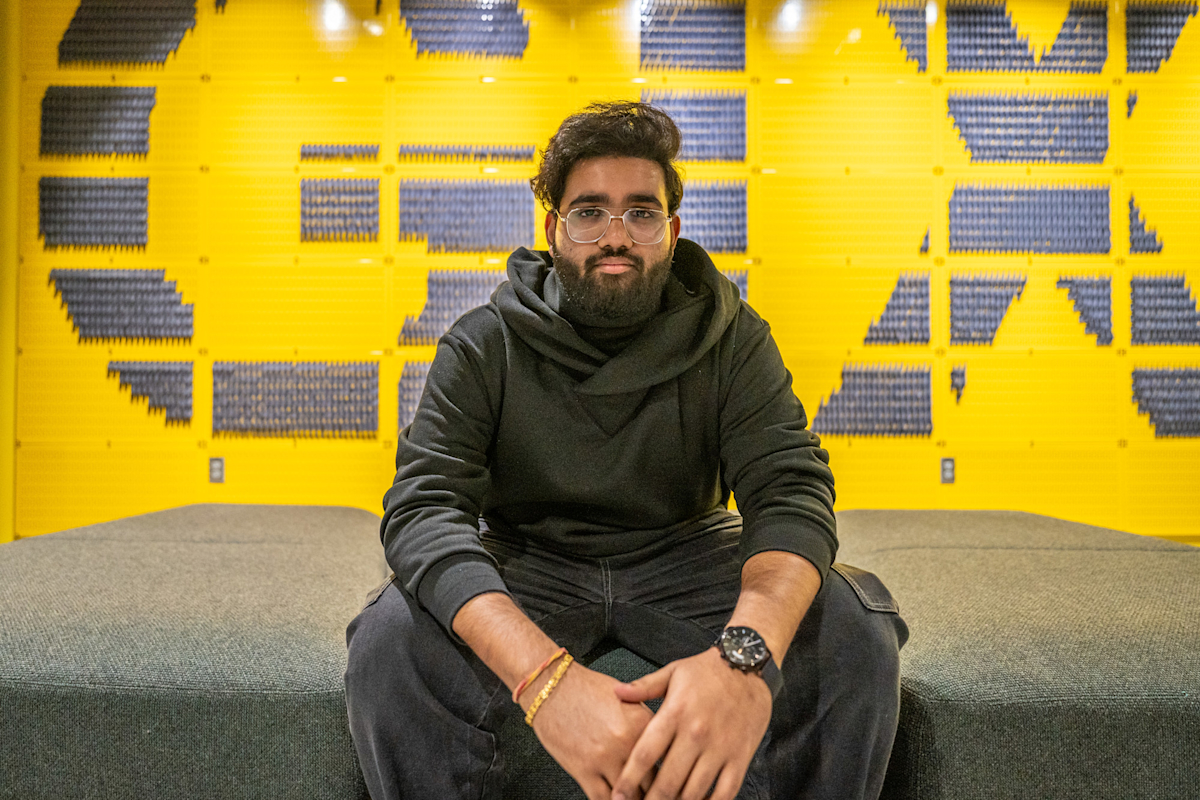Follow an MS in Technology Innovation student as he blends tech, business, and design while seizing every opportunity the ecosystem offers.
By Julia Potapoff
If you find yourself at the University of Washington’s Global Innovation Exchange (GIX) building in Bellevue, Washington, chances are you’ll spot Harshavardhan Reddy Gajarla deep in a robotics project at the GIX Prototyping Labs. As a dedicated student in the Master of Science in Technology Innovation program, Gajarla is part of an intensive 18-month journey that blends engineering, business, and design—equipping students with the diverse skills needed to thrive in today’s tech industry.
Gajarla’s background in computer science engineering fueled his desire to merge business acumen with his technical expertise. He knew positioning himself in a tech-driven master’s program would be the key to launching his ideas.
“When choosing a university, consider the alumni network, location, environment, faculty, and industry access,” Garjarla shares. “The opportunities at the University of Washington and the Global Innovation Exchange keep growing; it’s up to you to take advantage of them.”
During a visit to GIX, we saw that Gajarla is engaged with everything the program offers.
Juggling work, classes, and everything in between
Gajarla balances a well-rounded and curated schedule that combines on-campus IT work, classes, and exciting extracurriculars. His week blends technical coursework, business strategy discussions, and hands-on robotics training.

Monday
Gajarla works his on-campus IT job from 9 a.m. to 1 p.m., troubleshooting tech issues and managing facilities.

Tuesday
Many of his courses are concentrated on Tuesday with User Research (9:30 a.m. to 12:20 p.m.), Fundamentals of Technology Strategy (2:00 p.m. to 3:30 p.m.), a Graduate Student Association meeting (3:30 p.m. to 4:30 p.m.), and an elective, the Business Plan Practicum (6 p.m. to 8:30 p.m.), which is held at the main UW campus in the University District. This elective is a good example of the program’s flexibility and access to cross-disciplinary business courses.

Wednesday
He attends Fundamentals of Technology Strategy (10:30 a.m. to 11:50 a.m.) before heading straight to his IT job (noon to 3 p.m.).

Thursday
After another morning doing IT work, he heads to Robotics Lab (1 p.m. to 4:50 p.m.) for an immersive, hands-on session with the latest robotic systems.
Each day requires switching gears between technical problem-solving, business strategy, and hands-on engineering work, a testament to the program’s interdisciplinary nature.
A not-so-ordinary (yet totally typical) day: March 13, 2025
Thursday, March 13, was a busy day for Gajarla, reflecting his ambitious nature and commitment to pursuing the activities he’s passionate about.
With the winter quarter wrapping up, students were deep in final presentations and project showcases. Known for his drive and eagerness to grow, Gajarla fills his calendar with opportunities to apply what he’s learning—something the program’s accelerated 18-month timeline is designed to support students in thriving in any industry environment.

9 a.m. User research presentation
Gajarla and his team kicked off the day with their final project presentation in the User Research course. Their project, The Future of the Light Rail, explored public transportation improvements in Seattle through survey data and statistical analysis. Their 15-minute pitch included insights and recommendations that every local commuter (ourselves included) could appreciate. Following the presentation, they received real-time feedback from faculty and classmates, just as they would in an actual industry pitch meeting.

Juggling work and classes
Gajarla balances his coursework with an on-campus IT job that he secured during his first quarter. International students can work on campus, and Gajarla was intentional about choosing a role that aligned with his interests. Through this job, he’s gained insight into facility management, troubleshooting, and the ever-persistent mystery of why microphones never seem to work during events.
Throughout the morning, he toggled between attending presentations and handling IT issues, a balancing act that will serve him well professionally.

Noon: Lunch Break
Thanks to the last day of class, the instructor provided today’s lunch. However, lunch is more of a flexible, catch-it-when-you-can affair on a typical day. Gajarla and his classmates usually grab something from Panda Express or a local burger spot.
1 p.m.: Robotics lab
After lunch, it was time for Robotics Lab 1, a required course for students in the robotics track. The first hour is spent discussing recent innovations, followed by hands-on lab time where students experiment with robots. If they need a mental reset, they hit the ping-pong table to brainstorm ideas (or clear their heads).
Making the most of every opportunity
A true rock-star student, Gajarla actively pursues his passions and takes full advantage of everything the University of Washington and the surrounding region offer. He recently participated in the Microsoft Reactor Hackathon and submitted a project for the Microsoft Imagine Cup, which led to an invitation to speak on sustainability. He credits the University of Washington’s prime location near industry giants like Microsoft and Meta as a game-changer for networking and professional exposure.
Gajarla also took the initiative to reach out to a University of Washington robotics professor and secure a spot in an autonomous research lab, proving that proximity to innovation matters when choosing a university.
Gajarla’s journey is a testament to the power of strategic choices, relentless curiosity, and the willingness to explore every opportunity. If you’re ready to blend cutting-edge tech education with real-world application, the University of Washington’s Master of Science in Technology Innovation might be the perfect place to start. Learn more here.

 Back to News
Back to News

